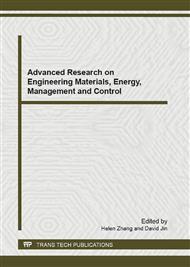p.223
p.227
p.232
p.236
p.241
p.246
p.250
p.255
p.260
Analysis to Effective Elastic Modulus and Porosity for Artificial Bone Scaffold with Hydroxyapatite Microspheres
Abstract:
The effective elastic modulus of hydroxyaptite (HA) microspheres composite scaffold is determined by the HA microspheres’ elastic modulus, accumulation topology model and the porosity. Experiments showed that different accumulation pattern and porosity has different modulus for bone scaffold. Furthermore, porosity and accumulation pattern are affected directly by the adhesive thickness. Here, we elucidate the effect of the scaffold parameters on bone sitffness and porostiy by means of a mathmatically based approach. Based on ANSYS simulation platform, the effective elastic modulus of HA microspheres scaffold was demonstrated. And the effective elastic modulus of artificial bone scaffold with different adhesive thickness was calculated by using APDL. Use the void fraction to illustrate the porosity of HA microspheres scaffold, which is an important consideration when attempting to evaluate the potential volume of water and hydrocarbons it may contain. By analysis of the optimization results, the effective elastic modulus reaches the maximum when the adhesive layer thickness is 0.05 mm, while the corresponding porosity is 0.5231
Info:
Periodical:
Pages:
241-245
Citation:
Online since:
January 2012
Authors:
Price:
Сopyright:
© 2012 Trans Tech Publications Ltd. All Rights Reserved
Share:
Citation:


